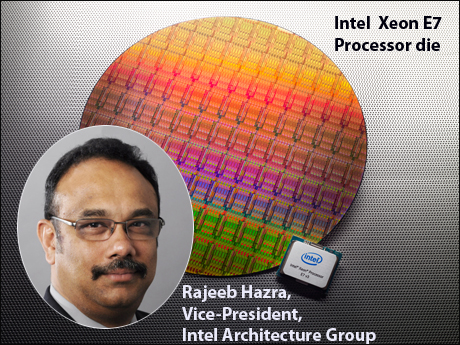
From Vishnu Anand
Bangalore May 19 2015: It is one of Information Technology's ironies: While India has scant presence in the list of the world's top 500 supercomputers -- the last list dating back to November 2014, has just 9 India based systems -- this country is the base where the number-crunching technology of almost every single supercomputer today is designed, honed and developed.
Why? Because Intel's Xeon family is the most favoured processor for supercomputing. And India is Intel's main location for Xeon development.
IndiaTechOnline meets Rajeeb Hazra, Vice-President, Intel Architecture Group & GM Technical Computing to find out more.
The Government of India recently announced the launch of the National Supercomputing Mission, aimed at providing the impetus to connect academic and R&D institutions with a grid of over 70 high-performance computing facilities at an estimated cost of Rs 45 billion. The heart of Intel’s high performance chip manufacturing division lies in India, and the company is confident that India will house the world’s largest supercomputer ecosystem.
Use and create: Says Hazra: “Every supercomputer in India has an Intel component, and the brains of Intel HPC engineers from India are making it tick.”
Explaining Intel’s supercomputing philosophy, he adds, “Intel follows the Use and Create principle for its High Performance Computing (HPC) operations. Use – to enrich businesses and society at large; and Create – Build and maintain supercomputers for optimum performance.”
Building an ecosystem: Intel believes that India is at the cusp of a supercomputing revolution, and it is very essential to streamline HPC initiatives: “Intel has the technology, and our partners put them inside their devices. What we also need is a complete self-contained ecosystem – social and economic drivers that demand supercomputing power. Small and medium businesses can today ‘buy’ HPC in various sizes, on demand. Once the use cases expand, HPC can become more accessible, affordable and of course, increase compute quality."
Intel’s HPC flagship: Intel recently launched its Xeon E7 processor, built specifically for mission-critical high-performance computing. Claimed to provide the maximum uptime in the industry, optimized for high performance computing and built on the most scalable platform, the Xeon E7 is currently Intel’s HPC flagship.
9 Indian supercomputers in Top 500 list November 2014 ... all fueled by Intel Xeon E5 family